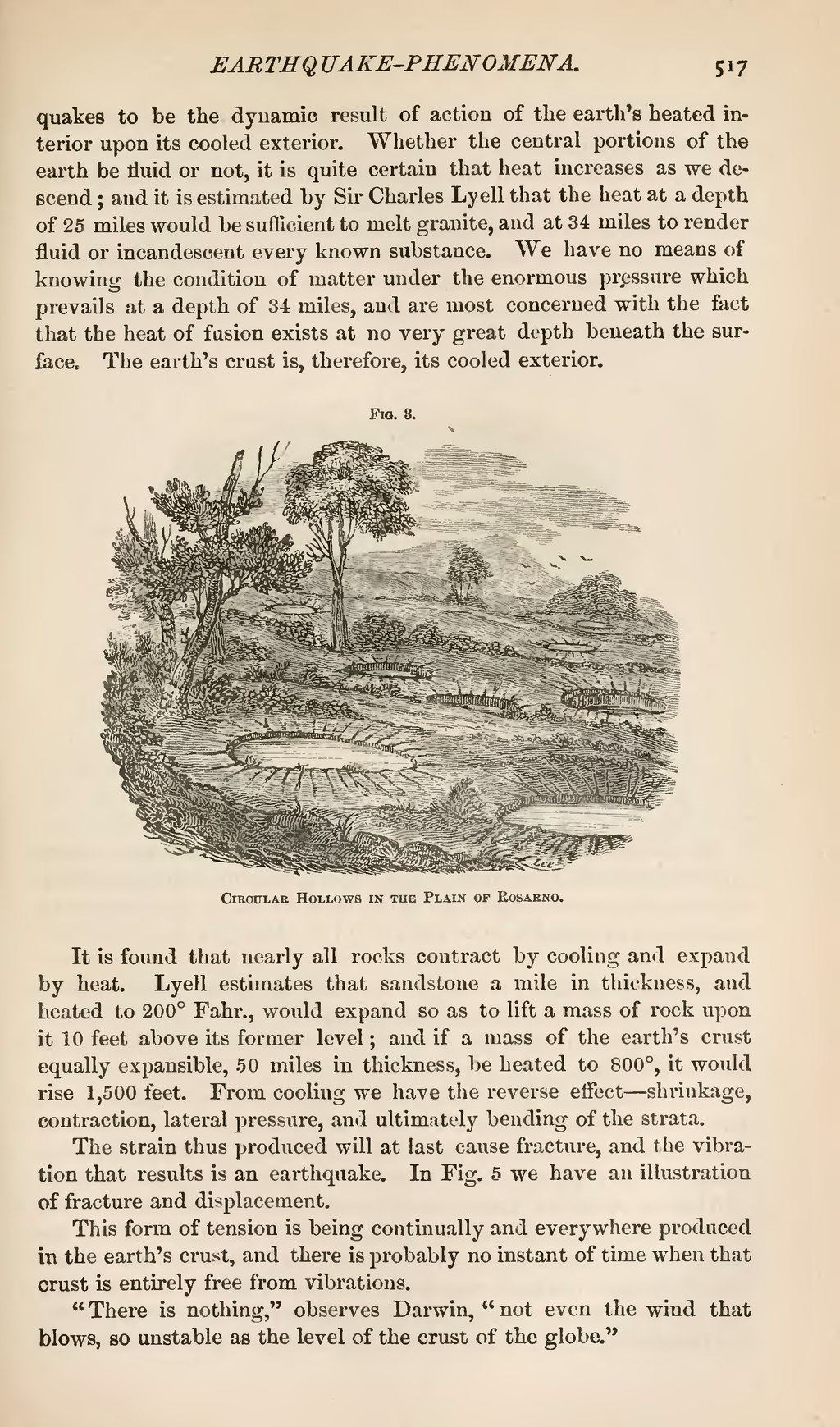quakes to be the dynamic result of action of the earth's heated interior upon its cooled exterior. Whether the central portions of the earth be fluid or not, it is quite certain that heat increases as we descend; and it is estimated by Sir Charles Lyell that the heat at a depth of 25 miles would be sufficient to melt granite, and at 34 miles to render fluid or incandescent every known substance. We have no means of knowing the condition of matter under the enormous pressure which prevails at a depth of 34 miles, and are most concerned with the fact that the heat of fusion exists at no very great depth beneath the surface. The earth's crust is, therefore, its cooled exterior.
Fig. 3.

Circular Hollows in the Plain of Rosarno.
It is found that nearly all rocks contract by cooling and expand by heat. Lyell estimates that sandstone a mile in thickness, and heated to 200° Fahr., would expand so as to lift a mass of rock upon it 10 feet above its former level; and if a mass of the earth's crust equally expansible, 50 miles in thickness, be heated to 800°, it would rise 1,500 feet. From cooling we have the reverse effect—shrinkage, contraction, lateral pressure, and ultimately bending of the strata.
The strain thus produced will at last cause fracture, and the vibration that results is an earthquake. In Fig. 5 we have an illustration of fracture and displacement.
This form of tension is being continually and everywhere produced in the earth's crust, and there is probably no instant of time when that crust is entirely free from vibrations.
"There is nothing," observes Darwin, "not even the wind that blows, so unstable as the level of the crust of the globe."

